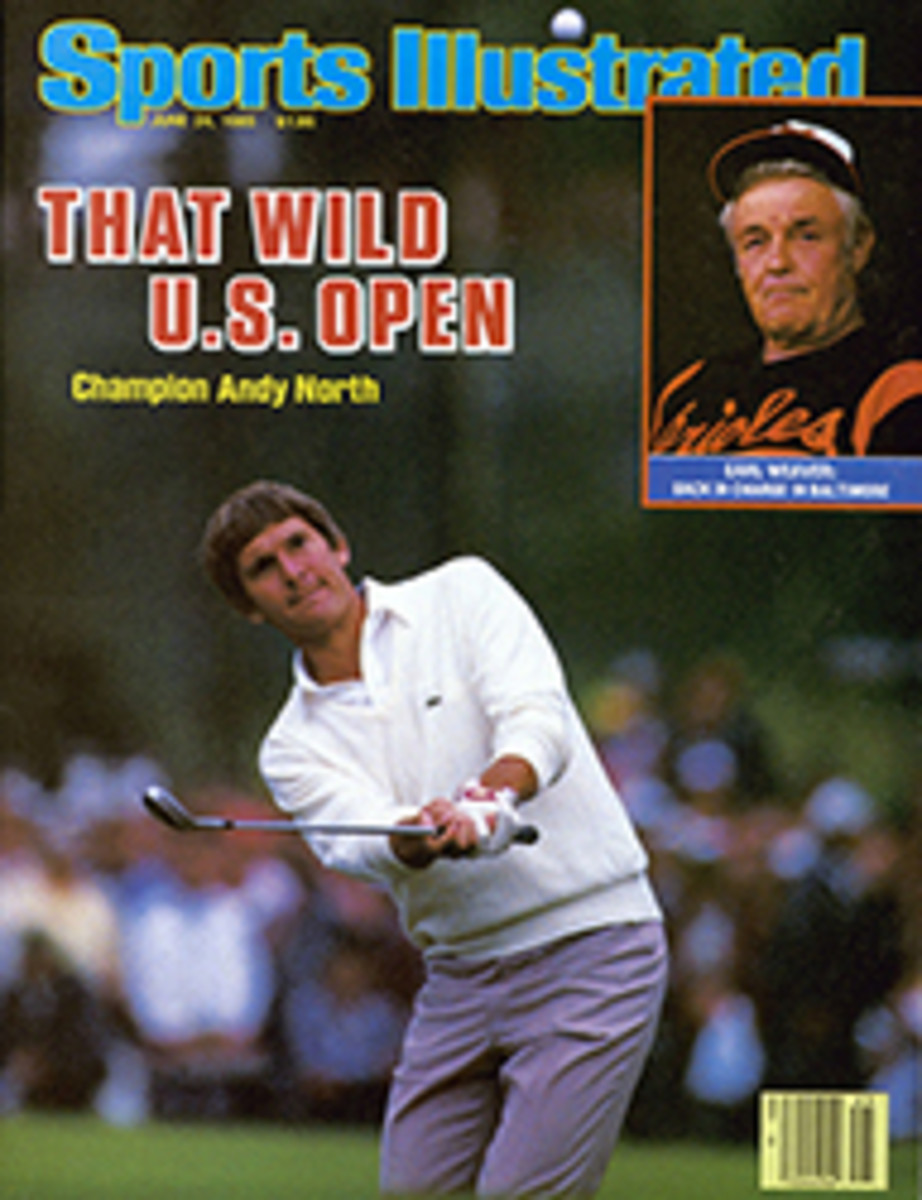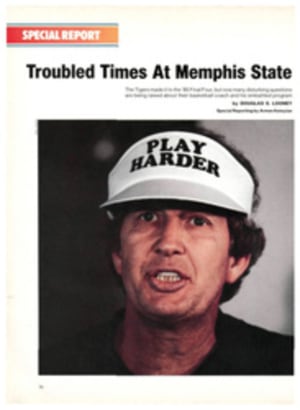
SURPRISINGLY, THE NO. 1 SPECTATOR SPORT IN JAPAN IS MOTORBOAT RACING
Japan—land of flower-arranging, sumo wrestlers, geisha girls, the tea ceremony, motorboat racing....
Motorboat racing? Few gaijin—foreigners—realize it, and Japanese traditionalists hate to admit it, but Japan's most heavily attended spectator sport is motorboat racing. In fact, Japan is the only country in the world where professional speedboat drivers compete on a daily basis—and with pari-mutuel betting to boot. Last year, the sport attracted 34.4 million spectators who wagered more than $4 billion at the country's 24 racing sites, which are located in or near virtually every major city on three of the four main islands. (The exception is the northernmost island, Hokkaido, where the winters and waters are just too cold for water sports.)
Strangely, foreign tourists are virtually unaware of the sport's existence, and even Japanese-language general press, television and radio coverage is nonexistent. The aura of mystery surrounding the sport may, in fact, heighten the public's interest.
The conundrum at the core of Japanese motorboat racing is Ryoichi Sasakawa, an extremely wealthy entrepreneur who is fond of making spectacular donations and gestures: He donated $500,000 worth of fireworks set off during the closing ceremony of the Los Angeles Olympics. Sasakawa, now 86, made his fortune after World War II in motorboat racing and shipbuilding—in that order. He says he got the idea of racing hydroplanes from a picture in LIFE magazine. In 1952, Sasakawa obtained the exclusive franchise to establish racecourses throughout Japan, and the sport was launched. He founded the Federation of Prefectural Associations of Motor Boat Racing and in 1955 named himself president—in effect, for life, though he must be reelected every three years. Through this organization, Sasakawa controls every aspect of racing, from the design and construction of the equipment to the training and professional management of the racers to the formulation of regulations.
The racing craft, manufactured by the Yamato Company, are identical in every respect. Each hydroplane weighs 147.4 pounds and draws 12 inches; the hull, made of wood, measures 7'4". The engine is a Yamato Model 101, a two-cycle, 398-cc, 30-horsepower outboard. Minimizing variations in mechanical performance means that the only relevant factor for bettors to consider is the skill of the driver.
There is only one way to become a professional motorboat racer in Japan. The federation, the sole franchising authority for the sport, recruits and trains drivers and sanctions them for competition. Only federation racers, about 6% of whom are women, may even enter a boat. An aspiring driver must be between 17 and 23 years old, weigh less than 121 pounds, be no taller than 5'6" and have a high school diploma. Those who qualify must pass a series of examinations to be accepted for training.
The training center is located on the shore of Lake Motosu at the foot of Mount Fuji. Its motto, loosely translated, is "Strictness in training, cheerfulness in livelihood." During the two annual acceptance periods, in April and October, competition is extremely keen. This April, 1,000 men and women applied; 30 were accepted—but, says a federation official, Tsutomu Fujikawa, "Ten will certainly be eliminated before graduation by the hard training."
Trainees learn more than merely how to handle a boat: They have to submit to intense regimentation. For example, they must wear uniforms and participate in daily flag-raising and -lowering ceremonies. Reveille is at 6 a.m., lights-out is at 9:30 p.m. (trainees sleep 10 per dormitory room), and baths may be taken only between 5 p.m. and 6 p.m. After a year of this rigorous existence, relieved by two eight-day vacations, the trainees graduate, in March and September, and can begin their professional life of touring from racecourse to racecourse.
Most courses hold races 180 days a year, in series of four to six consecutive days; at 10 races per day, this adds up to roughly 900 meets, 4,000 race days and 40,000 races a year. The racecourses are built and owned by various private and public consortia, but they are operated by municipalities looking for additional revenue.
One typical racecourse is Heiwajima—the name means Island of Peace—built on reclaimed land in south Tokyo. It is just a 25-minute cab ride from downtown and can also be reached by train or bus. General admission is only about 20¢, and a spot in an enclosed reserved-seat section costs about $5.
Down on the concourse, vendors sell racing forms, ballpoint pens and felt-tipped markers, while tipsters, called yoso-ya (business advisers), offer bettors their services. Bets at the pari-mutuel windows can be made for 100, 200, 500 and 1,000 yen, or about 40¢, 80¢ $2 and $4.
Under the regulations that govern motorboat racing in Japan, 75% of betting and gate revenues are paid out to bettors. Last year the federation had a profit of $320 million.
The racing schedule begins at 11:30 a.m. and ends at 4 p.m. Six boats compete in each race; the drivers are identified by their numbers as well as by distinctively colored helmets and specially reinforced protective lifejackets. (Despite the dangers inherent in the combination of lightweight craft and daredevil drivers, accidents are rare. Collisions do happen all the time, but the protective gear prevents injuries.) Each race consists of three laps around a 600-meter course.
A race has, in effect, two starts. The boats, engines running, are tethered in individual slips in the pit area at the far end of the racecourse, behind the No. 2 turn buoy. The first start, two minutes before the formal one, occurs when drivers jerk the quick-release latches holding the boats back and speed out to the positioning area in back of the start-up line. There, the drivers maneuver their hydroplanes into position.
Strategies vary. Some boats sit dead in the water, far back, their drivers eyeing the inside position. Others circle warily at slow speed, actually heading away from the starting line but obviously trying to build up speed for a flying start.
Fifteen seconds before the formal start, the yellow sweep hand on a huge timing clock at the start/finish line begins to move. Now the engines roar as the drivers hit full throttle. Each boat must cross the starting line no more than one second after the sweep hand hits zero—a split second either early or late means that a racer is disqualified (bets on that entrant are refunded) and is penalized with a 30-day suspension. The drivers get their boats up to nearly 50 mph on the straightaways, but slow down to 6 mph in the curves; it's all over in about one minute and 15 seconds.
The federation currently has about 1,500 drivers, divided into three categories—A, B and C—according to a point system that's based primarily on wins. Anyone who remains in class C for two years is encouraged to pursue another career. Each year two or three drivers are asked to leave for rules infractions—one of the most serious is an illegal engine tune-up—or for drawing too many starting-line disqualifications. Don't expect to see any finish-line rhubarbs, however, between drivers and the officials. The authority of the officials is absolute. Says Fujikawa, "A driver may protest a ruling, but an official will not accept the protest. Our drivers are taught not to complain."
Drivers aren't on salary, but each does get a fee of around $60 a day, for competing, and then there are cash awards, of around $436, $312 and $208, for first, second and third place, respectively.
Drivers average around $46,000 a year in purses and appearance fees, but the winningest male racer last season, Tomotsugu Kitahara, made $220,000, and his female counterpart, Kiyoko Okano, made $64,000.
Given the prevailing attitude of male superiority in Japan, it is nothing short of amazing that men and women have competed head to head from the start. Women racers are not only fully accepted in motorboat racing, they are actively sought after. Whether the federation is motivated by idealism or public relations, the result is relatively high incomes and visibility for a number of women drivers.
There is no upper age limit for competitors. Tadahiko Katsumoto, 67, is a grandfather twice over and a B-class racer. He joined the federation 31 years ago, when the sport was just two years old, and has been at it ever since. Katsumoto still gets in his share of wins, but he admits that he isn't quite as sharp on the turns as he once was and that perhaps some of the fight is gone. "In our sport, you must be strong and tough all the time," he says.
So far, only a handful of gaijin have become motorboat racers, but the federation has an open mind on the subject. As for tourists, a day at the races may teach them more about modern Japanese society than a night at a Kabuki performance. But the best reason not to miss out on motorboat racing is that it's an exciting, entertaining sport. Just don't let your travel bureau try to tell you there's no such thing.
ILLUSTRATION
PHILIP ANDERSON

